Undeniable Science: Police Tactics Are Worsening The Spread Of Coronavirus
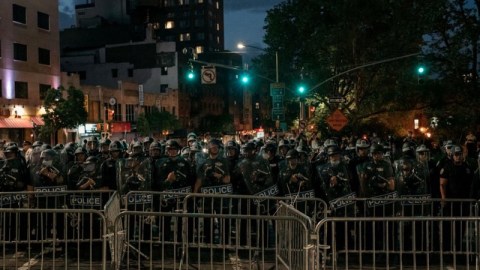
Too little breathing room, tear gas, and insufficient masks are a recipe for disaster. Police are worsening all three.
Across the nation and the world, people of all skin colors are uniting against racism and police brutality, coming together to protest decades of injustices. Even in the midst of a pandemic, the overwhelming majority of people participating are working hard to make their voices heard while remaining safe: staying physically distant, wearing masks, and not touching their faces, particularly their eyes.
In the largest systematic review and meta-analysis of person-to-person transmission of coronavirus in humans, published on June 1, 2020, all three of these medical interventions were shown to be effective. They remain some of the best behavioral recommendations for us all. But police tactics are worsening the spread of coronavirus. In particular, crowd-control techniques such as kettling, mask removal and interception, and tear gas/pepper spray are especially egregious. Here’s the science of why.
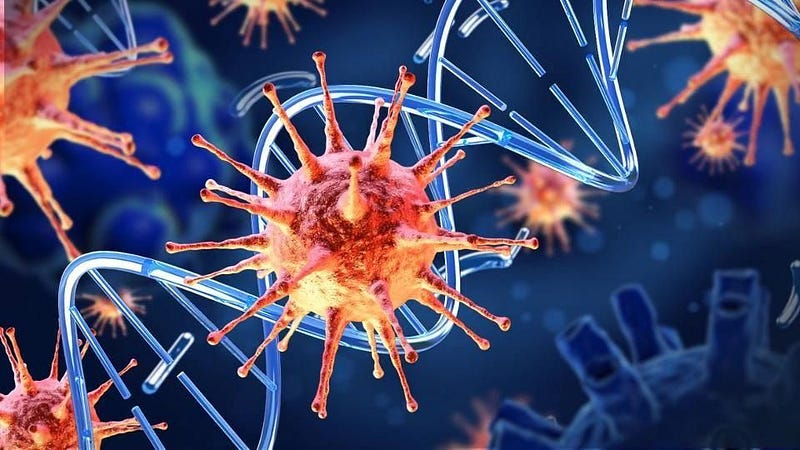
The science. On June 1st, 2020, the largest review and meta-analysis of person-to-person transmission of the novel coronavirus was published, leveraging a total of 172 observational studies and 44 comparative studies encompassing a total of more than 25,000 patients. The goal of the study was to investigate the effects of physical distance, face masks, and eye protection on the transmission of SARS-CoV-2 (the virus that causes COVID-19 in humans) in both healthcare and community settings.
Although, like all scientific studies, this one is subject to revision as we learn more about the nature of this virus and its relationship to human beings, there are three big conclusions that come out of it.
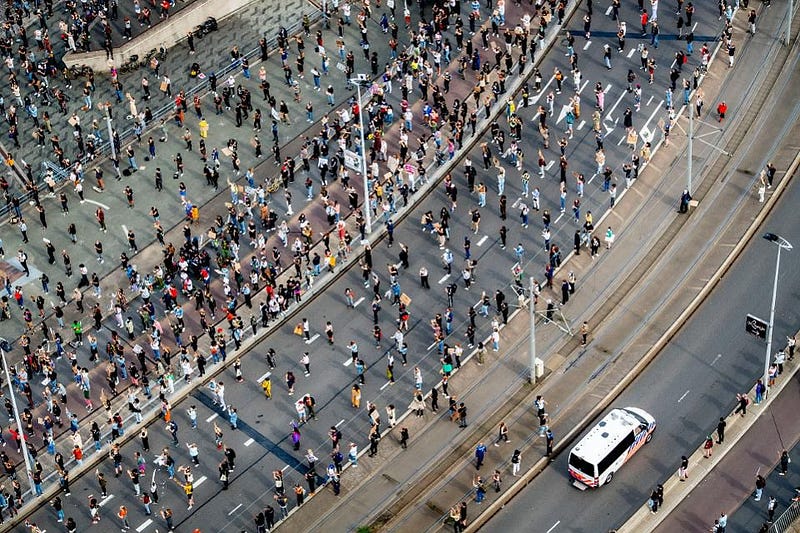
Physical distancing works to reduce transmission. How much distance should there be between you and the nearest person to you if you want to reduce the risk of either one of you passing the novel coronavirus onto the other? The studies demonstrate that distances of more than 1 meter (3.3 feet) is superior to distances of less than one meter. On top of that, each additional 1 meter (3.3 feet) of distance will further reduce your risk of transmission by roughly half.
Both of these conclusions are reached with moderate certainty, which is a pretty high bar to clear for something that’s been studied for such a short period of time. Whether you call it “social distancing” or “physical distancing,” the goal is the same: to increase the spacing between individuals. Do it effectively, and the risk of spreading of the virus drops precipitously.
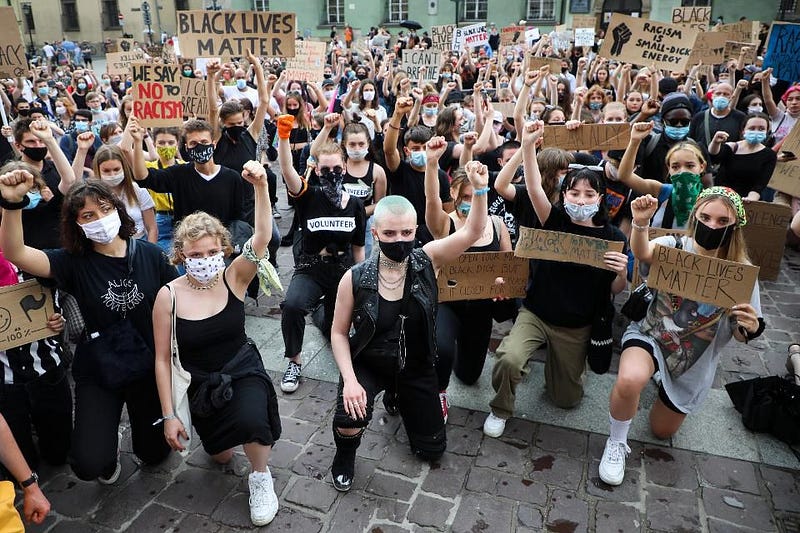
Face masks reduce the risk of transmission. The risk reduction on this one is even more severe than the risk reduction from physical distancing. However, the greatest levels of risk reduction occurred with hospital-quality face masks: N95 or similar. This is the type of mask that we’re experiencing an enormous shortage of in the United States; most of the masks people are wearing are not of that quality.
Lower quality options include disposable surgical masks, many-layer cotton masks, or even simple cloth masks, but the best evidence from the studies still suggest that wearing a mask and using it properly (i.e., not touching the insides of it with your fingers) will reduce your risk of transmission over no mask at all. Higher-quality masks are better than lower-quality masks, but no mask at all seems to yield the worst outcomes.
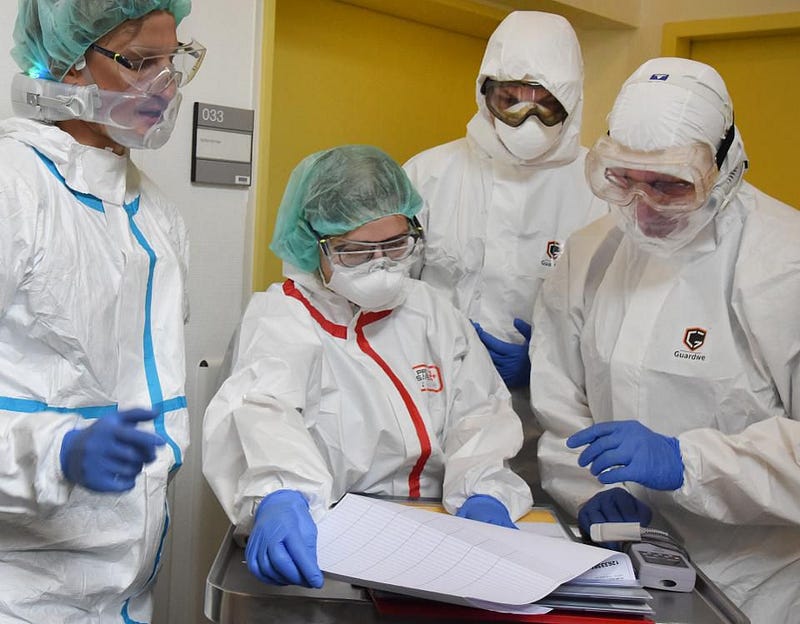
Eye protection was associated with less infection. How many times a day do you touch your face? For most of us, this is something we do all the time, but rarely notice. Only with warnings about COVID-19 and the start of widespread mask use did most of us gain an awareness of how frequently we do this. With a strong spring allergy season in full swing, many of us are tempted to touch our eyes quite often, despite the fact that finger-to-eye contact is a dangerous disease vector for the novel coronavirus.
The intervention that people have been using in a medical setting — to protect not only against direct contact but droplet contact as well — has been eye protection: safety goggles, airtight glasses, etc. Although there was less certainty about its effectiveness than for either face masks or physical distancing, the use of eye protection is recommended in both public and healthcare settings, as supported by the evidence so far.
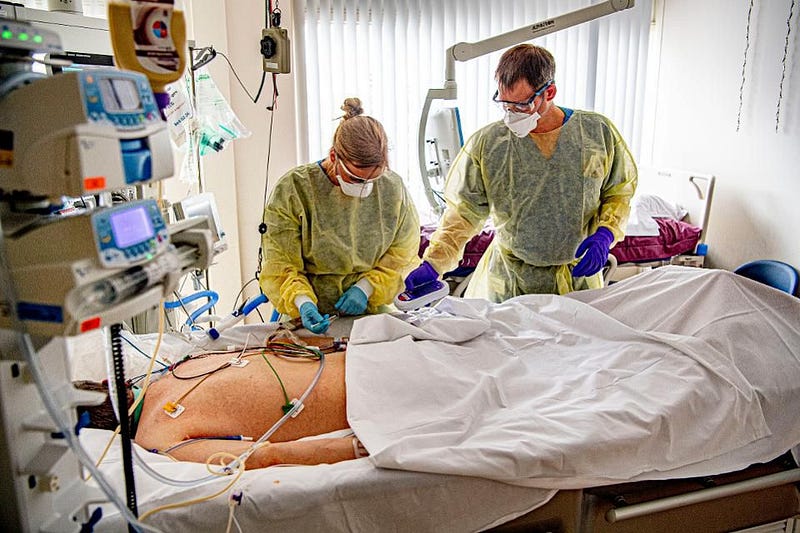
Of course, none of these studies were conducted in controlled trials; these were all either observational or comparative studies, whereas the most robust science comes from randomized trials. However, this is the best, most comprehensive information we have at our disposal right now, at this very moment, and it’s therefore the information we should use in trying to protect every person from acquiring this novel coronavirus.
To put it bluntly, the public health and safety goals of everyone in the world, wherever the virus is present, should include:
- keeping at least 1 meter (3.3 feet) of distance between individuals from different households, preferably 2 meters (6.6 feet) or more,
- encouraging people to wear the highest-quality masks they can acquire, and to use those masks properly to cover their nose and mouth,
- and to do everything possible to keep people’s mucous membranes — particularly the ones in their eyes — clear of droplet particulates and to help them prevent touching their eyes.

If protests are happening where you live, any public entity that existed to ensure the health, safety, and security of its residents would act in ways that helped meet these goals. Protesters would be given enough space for their protest so that the recommended physical distance between each person could be maintained. Sufficient numbers of high-quality masks would be provided (and their use encouraged) to protesters so that the spread of the novel coronavirus would be limited as much as possible.
And efforts would be made to ensure that the air quality was as clear as possible, removing as many confounding factors that cause respiratory distress or eye discomfort. In the time of COVID-19, during this current global pandemic, an organization that exists with the purpose of serving and protecting its residents would take these recommendations as their civic responsibility.
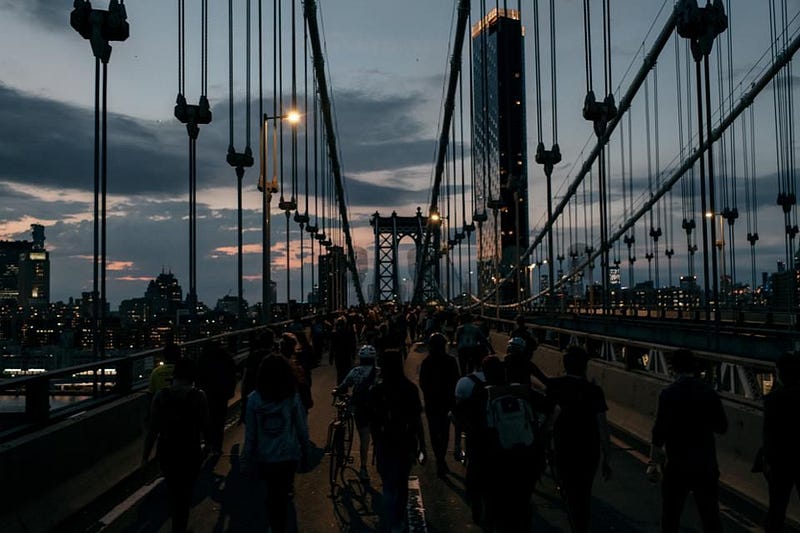
The police response. But what’s occurring at many of the current protests across the United States instead undermines all of these behavioral interventions. Instead of assessing the number of people coming to protest and providing them enough of an area to properly socially distance, there are many reported instances of police confining large numbers of protestors in insufficiently large spaces, penning them in, and even forcing them to crowd together. Oftentimes, these conditions persisted for hours.
The crowd-control technique, known as kettling, is controversial even under non-pandemic conditions. During a pandemic, this tactic is transformatively violent, as it forcibly exposes the protesters to one another’s germs. Any activity that forces an increase in non-essential contacts between people is unacceptable, as this is a lethal disease that has already taken the lives of more than 113,000 Americans.
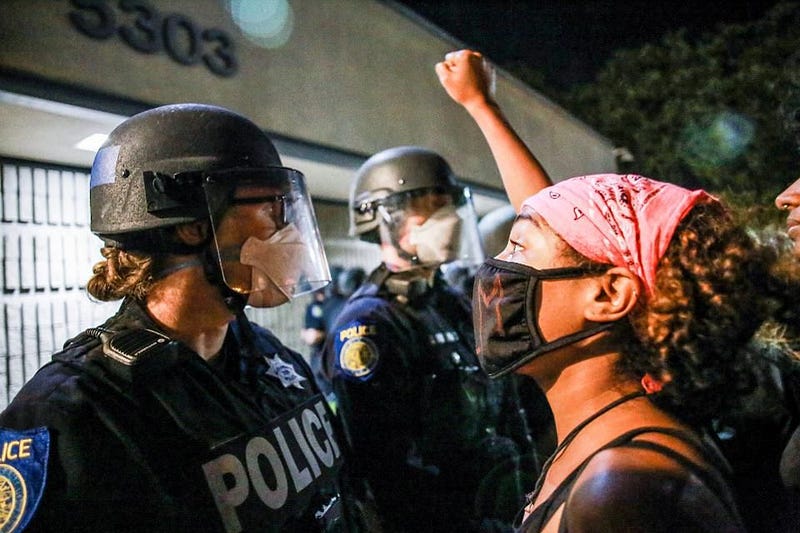
As far as masks go, there are numerous documented incidents of police officers pulling down protesters’ masks and even pepper spraying them immediately afterwards, a clear act of violence even under non-pandemic conditions. But on a larger scale, shipments of masks designed to be used at these protests have been seized by law enforcement, delaying their arrival and putting more people at unnecessary risk of acquiring COVID-19.
But perhaps the worst offense of all is the widespread use of tear gas and pepper spray, which not only compels those affected to touch their eyes, but causes respiratory distress and panic, among other symptoms. The use of this tactic in particular has come under fire from medical and healthcare professionals, who assert that this will accelerate the spread of the novel coronavirus during this pandemic. There are presently movements underway to ban their use altogether, given the current circumstances.
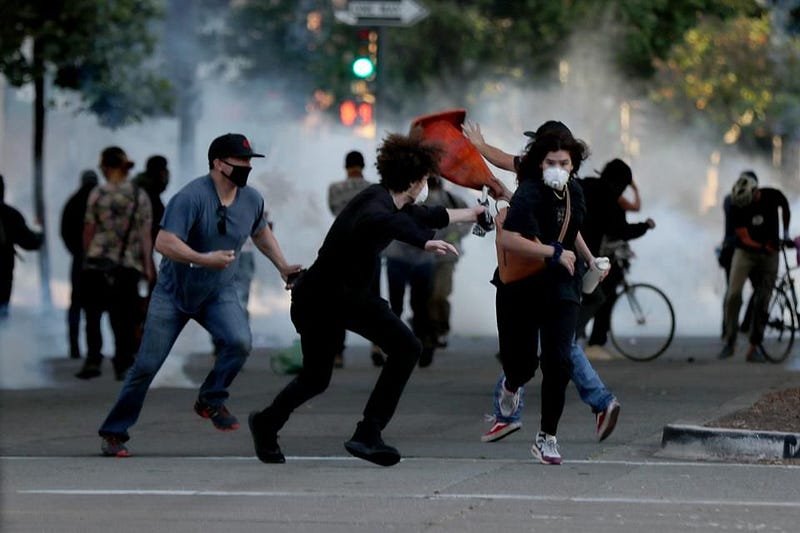
On a scientific front, the largest meta-study ever performed is a triumph for three different interventions in terms of slowing the spread of the novel coronavirus. Maintaining a physical distance of 1 meter (3.3 feet) or more hinders the spread of the disease, with greater distances restricting the spread even further. Masks can greatly reduce the risk of infection, and eye protection is also associated with lower rates of infection.
And yet, the tactics police are choosing to use actively undermine these efforts. Crowding and kettling tactics force insufficient physical distancing. Mask removal and interception increases exposure and transmission risk. Tear gas and pepper spray amplify the severity of an already dire situation. The science is very clear on what serving and protecting the populace would look like during these times: giving protesters enough room to breathe, encouraging the responsible use of masks, and keeping the air clean and safe. Anything less is nothing short of brutality.
Ethan Siegel is the author of Beyond the Galaxy and Treknology. You can pre-order his third book, currently in development: the Encyclopaedia Cosmologica.





